#automation testing vs manual testing
Explore tagged Tumblr posts
Text
Rethinking Manual Testing: Exploring Real Value
A human thinking effort that is lost in mundane, repetitive work is basically marginal value, creating toxic cycles during your so called manual testing effort. The word “manual” in manual testing is misleading. Every testing effort needs a tool. Ex: To document your tests you need an Excel sheet or a tool like Jira. If I would use the word manual, I would mean thinking or I would just call it…
#automation testing vs manual testing#cognitive biases and heuristics#cognitive biases examples#cognitive biases in decision making#software test tools
0 notes
Text
#automation testing#manual vs automation#automation vs manual#manual testing#software testing services
2 notes
·
View notes
Text
Automation Testing vs. Manual Testing: Which approach is best for your project? Discover the key differences, benefits, and scenarios where each shines. Learn how to leverage both to ensure top-notch software quality and performance. Dive into our latest blog to make an informed choice! 🚀 #AutomationTesting #ManualTesting #SoftwareQuality #TechInsights
0 notes
Text
Automated Testing vs. Manual Testing: Which One is Right for Your Project?
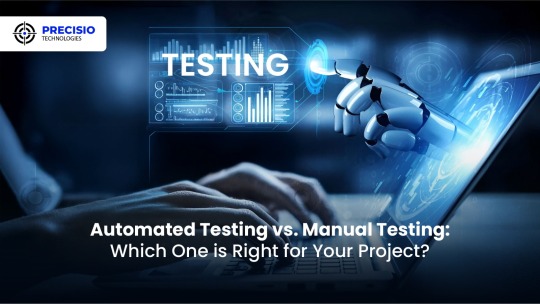
Achieving high-quality, reliable software stands as a fundamental requirement in software development. Successful testing functions as an essential tool to discover faults and build performance capabilities that create better user experience outcomes. Two main testing methods dominate the field: automated testing and manual testing. The process of quality software assurance uses different testing approaches that demonstrate their own advantages as well as weaknesses according to specific project requirements and scenarios. We will explore the specifics to determine which testing process works best for your system development efforts.
1. What Is Manual Testing?
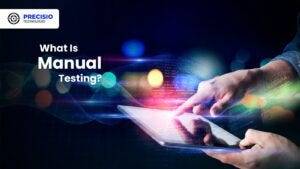
Manual testing involves a human tester manually executing test cases without using automation tools. Key Characteristics:
The methodology focuses its efforts on user interface together with usability and experience testing.
Human-centered applications where selection requires discretion include ad hoc testing and enumerative testing as well as examinations that need human evaluation.
Human performers are required during this approach; thus, it demands substantial time.
2. What Is Automated Testing?
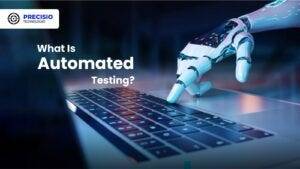
Software performing automated testing executes test cases through workflows and helpers. Key Characteristics:
Efficient for repetitive and regression testing.
Users must spend money on tools along with developing custom scripts for testing.
Reduces human error.
3. Advantages of Manual Testing

Human Intuition: Software testing professionals can detect kernels through their human cognitive ability that automated tools cannot match. The observation and evaluation of visual elements runs more efficiently through human operatives instead of advanced tools.
Flexibility: This method suits exploratory testing specifically because there are no pre-determined scripts available.
Low Initial Investment: Running this approach does not need tool purchases or applications to develop automation frameworks.
Adaptable for UI/UX Testing: Running this approach does not need tool purchases or applications to develop automation frameworks.
4. Advantages of Automated Testing
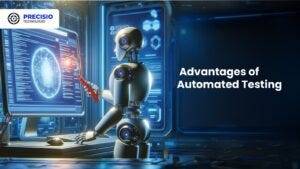
Speed: Executes repetitive tests much faster than humans.
Scalability: The system proves most effective for extensive projects that need constant system updates.
Accuracy: When performing recurring actions, automated systems minimize the chances of human mistakes.
Cost-Efficient in the Long Run: Once established and implemented, the system demands costly investments but ensures continuous development expenses decrease over time.
Better for CI/CD Pipelines: Such testing technology connects various development pipelines that support agile and DevOps methodologies.
5. Disadvantages of Manual Testing

Time-Consuming: The manual performance of repeated tests leads to delayed completion of projects.
Error-Prone: Large applications contain tiny bugs that human testers commonly fail to detect.
Not Ideal for Scalability: The process of increasing manual testing needs additional testers to avoid cost escalations.
6. Disadvantages of Automated Testing
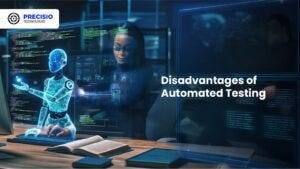
Initial Costs: Organizations must provide high financial resources to procure testing tools together with developing programming constructs.
Limited to Pre-Defined Scenarios: These testing approaches work poorly for handling exploratory or ad hoc testing.
Requires Maintenance: Test scripts need frequent updates when application changes occur.
Not Suitable for UI/UX Testing: Struggles with subjective user experience evaluations.
7. When to Use Manual Testing
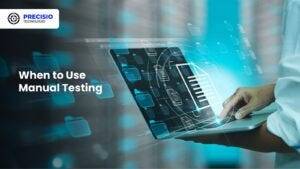
Small Projects: The testing method proves beneficial at a low cost for small applications and provides quick assessments.
Exploratory Testing: Testing this approach benefits projects whose scripts have not been defined yet or need evaluation for newly added features.
Visual and Usability Testing: Performing assessments on interface components together with design features.
8. When to Use Automated Testing
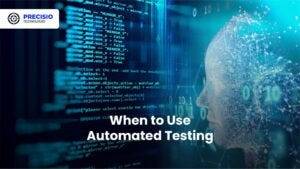
Large Projects: Handles scalability for projects with frequent updates.
Regression Testing: Program testing becomes more efficient through automation since automated assessments perform multiple tests following each update process.
Performance Testing: The system performs efficient capabilities to conduct load testing and stress testing.
Continuous Development Environments: Agile progression and DevOps implementations need automation as a core requirement.
READ MORE- https://www.precisio.tech/automated-testing-vs-manual-testing-which-one-is-right-for-your-project/
2 notes
·
View notes
Text
Full Stack Testing vs. Full Stack Development: What’s the Difference?

In today’s fast-evolving tech world, buzzwords like Full Stack Development and Full Stack Testing have gained immense popularity. Both roles are vital in the software lifecycle, but they serve very different purposes. Whether you’re a beginner exploring your career options or a professional looking to expand your skills, understanding the differences between Full Stack Testing and Full Stack Development is crucial. Let’s dive into what makes these two roles unique!
What Is Full Stack Development?
Full Stack Development refers to the ability to build an entire software application – from the user interface to the backend logic – using a wide range of tools and technologies. A Full Stack Developer is proficient in both front-end (user-facing) and back-end (server-side) development.
Key Responsibilities of a Full Stack Developer:
Front-End Development: Building the user interface using tools like HTML, CSS, JavaScript, React, or Angular.
Back-End Development: Creating server-side logic using languages like Node.js, Python, Java, or PHP.
Database Management: Handling databases such as MySQL, MongoDB, or PostgreSQL.
API Integration: Connecting applications through RESTful or GraphQL APIs.
Version Control: Using tools like Git for collaborative development.
Skills Required for Full Stack Development:
Proficiency in programming languages (JavaScript, Python, Java, etc.)
Knowledge of web frameworks (React, Django, etc.)
Experience with databases and cloud platforms
Understanding of DevOps tools
In short, a Full Stack Developer handles everything from designing the UI to writing server-side code, ensuring the software runs smoothly.
What Is Full Stack Testing?
Full Stack Testing is all about ensuring quality at every stage of the software development lifecycle. A Full Stack Tester is responsible for testing applications across multiple layers – from front-end UI testing to back-end database validation – ensuring a seamless user experience. They blend manual and automation testing skills to detect issues early and prevent software failures.
Key Responsibilities of a Full Stack Tester:
UI Testing: Ensuring the application looks and behaves correctly on the front end.
API Testing: Validating data flow and communication between services.
Database Testing: Verifying data integrity and backend operations.
Performance Testing: Ensuring the application performs well under load using tools like JMeter.
Automation Testing: Automating repetitive tests with tools like Selenium or Cypress.
Security Testing: Identifying vulnerabilities to prevent cyber-attacks.
Skills Required for Full Stack Testing:
Knowledge of testing tools like Selenium, Postman, JMeter, or TOSCA
Proficiency in both manual and automation testing
Understanding of test frameworks like TestNG or Cucumber
Familiarity with Agile and DevOps practices
Basic knowledge of programming for writing test scripts
A Full Stack Tester plays a critical role in identifying bugs early in the development process and ensuring the software functions flawlessly.
Which Career Path Should You Choose?
The choice between Full Stack Development and Full Stack Testing depends on your interests and strengths:
Choose Full Stack Development if you love coding, creating interfaces, and building software solutions from scratch. This role is ideal for those who enjoy developing creative products and working with both front-end and back-end technologies.
Choose Full Stack Testing if you have a keen eye for detail and enjoy problem-solving by finding bugs and ensuring software quality. If you love automation, performance testing, and working with multiple testing tools, Full Stack Testing is the right path.
Why Both Roles Are Essential :
Both Full Stack Developers and Full Stack Testers are integral to software development. While developers focus on creating functional features, testers ensure that everything runs smoothly and meets user expectations. In an Agile or DevOps environment, these roles often overlap, with testers and developers working closely to deliver high-quality software in shorter cycles.
Final Thoughts :
Whether you opt for Full Stack Testing or Full Stack Development, both fields offer exciting opportunities with tremendous growth potential. With software becoming increasingly complex, the demand for skilled developers and testers is higher than ever.
At TestoMeter Pvt. Ltd., we provide comprehensive training in both Full Stack Development and Full Stack Testing to help you build a future-proof career. Whether you want to build software or ensure its quality, we’ve got the perfect course for you.
Ready to take the next step? Explore our Full Stack courses today and start your journey toward a successful IT career!
This blog not only provides a crisp comparison but also encourages potential students to explore both career paths with TestoMeter.
For more Details :
Interested in kick-starting your Software Developer/Software Tester career? Contact us today or Visit our website for course details, success stories, and more!
🌐visit - https://www.testometer.co.in/
2 notes
·
View notes
Text
Which is better full stack development or testing?

Full Stack Development vs Software Testing: Which Career Path is Right for You?
In today’s rapidly evolving IT industry, choosing the right career path can be challenging. Two popular options are Full Stack Development and Software Testing. Both of these fields offer unique opportunities and cater to different skill sets, making it essential to assess which one aligns better with your interests, goals, and long-term career aspirations.
At FirstBit Solutions, we take pride in offering a premium quality of teaching, with expert-led courses designed to provide real-world skills. Our goal is to help you know, no matter which path you choose. Whether you’re interested in development or testing, our 100% unlimited placement call guarantee ensures ample job opportunities. In this answer, we’ll explore both career paths to help you make an informed decision.
Understanding Full Stack Development
What is Full Stack Development?
Full Stack Development involves working on both the front-end (client-side) and back-end (server-side) of web applications. Full stack developers handle everything from designing the user interface (UI) to managing databases and server logic. They are versatile professionals who can oversee a project from start to finish.
Key Skills Required for Full Stack Development
To become a full stack developer, you need a diverse set of skills, including:
Front-End Technologies: HTML, CSS, and JavaScript are the fundamental building blocks of web development. Additionally, proficiency in front-end frameworks like React, Angular, or Vue.js is crucial for creating dynamic and responsive web interfaces.
Back-End Technologies: Understanding back-end programming languages like Node.js, Python, Ruby, Java, or PHP is essential for server-side development. Additionally, knowledge of frameworks like Express.js, Django, or Spring can help streamline development processes.
Databases: Full stack developers must know how to work with both SQL (e.g., MySQL, PostgreSQL) and NoSQL (e.g., MongoDB) databases.
Version Control and Collaboration: Proficiency in tools like Git, GitHub, and agile methodologies is important for working in a collaborative environment.
Job Opportunities in Full Stack Development
Full stack developers are in high demand due to their versatility. Companies often prefer professionals who can handle both front-end and back-end tasks, making them valuable assets in any development team. Full stack developers can work in:
Web Development
Mobile App Development
Enterprise Solutions
Startup Ecosystems
The flexibility to work on multiple layers of development opens doors to various career opportunities. Moreover, the continuous rise of startups and digital transformation initiatives has further fueled the demand for full stack developers.
Benefits of Choosing Full Stack Development
High Demand: The need for full stack developers is constantly increasing across industries, making it a lucrative career choice.
Versatility: You can switch between front-end and back-end tasks, giving you a holistic understanding of how applications work.
Creativity: If you enjoy creating visually appealing interfaces while also solving complex back-end problems, full stack development allows you to engage both creative and logical thinking.
Salary: Full stack developers typically enjoy competitive salaries due to their wide skill set and ability to handle various tasks.
Understanding Software Testing
What is Software Testing?
Software Testing is the process of evaluating and verifying that a software product or application is free of defects, meets specified requirements, and functions as expected. Testers ensure the quality and reliability of software by conducting both manual and automated tests.
Key Skills Required for Software Testing
To succeed in software testing, you need to develop the following skills:
Manual Testing: Knowledge of testing techniques, understanding different testing types (unit, integration, system, UAT, etc.), and the ability to write test cases are fundamental for manual testing.
Automated Testing: Proficiency in tools like Selenium, JUnit, TestNG, or Cucumber is essential for automating repetitive test scenarios and improving efficiency.
Attention to Detail: Testers must have a keen eye for identifying potential issues, bugs, and vulnerabilities in software systems.
Scripting Knowledge: Basic programming skills in languages like Java, Python, or JavaScript are necessary to write and maintain test scripts for automated testing.
Job Opportunities in Software Testing
As the demand for high-quality software increases, so does the need for skilled software testers. Companies are investing heavily in testing to ensure that their products perform optimally in the competitive market. Software testers can work in:
Manual Testing
Automated Testing
Quality Assurance (QA) Engineering
Test Automation Development
With the rise of Agile and DevOps methodologies, the role of testers has become even more critical. Continuous integration and continuous delivery (CI/CD) pipelines rely on automated testing to deliver reliable software faster.
Benefits of Choosing Software Testing
Job Security: With software quality being paramount, skilled testers are in high demand, and the need for testing professionals will only continue to grow.
Quality Assurance: If you have a knack for perfection and enjoy ensuring that software works flawlessly, testing could be a satisfying career.
Automated Testing Growth: The shift toward automation opens up new opportunities for testers to specialize in test automation tools and frameworks, which are essential for faster releases.
Flexibility: Testing provides opportunities to work across different domains and industries, as almost every software product requires thorough testing.
Full Stack Development vs Software Testing: A Comparative Analysis
Let’s break down the major factors that could influence your decision:
Factors
Full Stack Development
Software Testing
Skills
Proficiency in front-end and back-end technologies, databases
Manual and automated testing, attention to detail, scripting
Creativity
High – involves creating and designing both UI and logic
Moderate – focuses on improving software through testing and validation
Job Roles
Web Developer, Full Stack Engineer, Mobile App Developer
QA Engineer, Test Automation Engineer, Software Tester
Career Growth
Opportunities to transition into senior roles like CTO or Solution Architect
Growth towards roles in automation and quality management
Salary
Competitive with wide-ranging opportunities
Competitive, with automation testers in higher demand
Demand
High demand due to increasing digitalization and web-based applications
Consistently high, especially in Agile/DevOps environments
Learning Curve
Steep – requires mastering multiple languages and technologies
Moderate – requires a focus on testing tools, techniques, and automation
Why Choose FirstBit Solutions for Full Stack Development or Software Testing?
At FirstBit Solutions, we provide comprehensive training in both full stack development and software testing. Our experienced faculty ensures that you gain hands-on experience and practical knowledge in the field of your choice. Our 100% unlimited placement call guarantee ensures that you have ample opportunities to land your dream job, no matter which course you pursue. Here’s why FirstBit is your ideal training partner:
Expert Trainers: Learn from industry veterans with years of experience in development and testing.
Real-World Projects: Work on real-world projects that simulate industry scenarios, providing you with the practical experience needed to excel.
Job Assistance: Our robust placement support ensures you have access to job openings with top companies.
Flexible Learning: Choose from online and offline batch options to fit your schedule.
Conclusion: Which Career Path is Right for You?
Ultimately, the choice between full stack development and software testing comes down to your personal interests, skills, and career aspirations. If you’re someone who enjoys building applications from the ground up, full stack development might be the perfect fit for you. On the other hand, if you take satisfaction in ensuring that software is of the highest quality, software testing could be your calling.
At FirstBit Solutions, we provide top-notch training in both fields, allowing you to pursue your passion and build a successful career in the IT industry. With our industry-aligned curriculum, expert guidance, and 100% placement call guarantee, your future is in good hands.
So, what are you waiting for? Choose the course that excites you and start your journey toward a rewarding career today!
#education#programming#tech#technology#training#python#full stack developer#software testing#itservices#java#.net#.net developers#datascience
2 notes
·
View notes
Video
youtube
Kanban, Waterfall, and DevOps are three different approaches to project management and software development. Here's an overview of each concept: 1. Kanban: Definition: Kanban is a visual management method for software development and knowledge work. It originated from manufacturing processes in Toyota and has been adapted for use in software development to improve efficiency and flow.
Key Concepts: Visualization: Work items are represented on a visual board, usually with columns such as "To Do," "In Progress," and "Done."
Work in Progress (WIP) Limits: Limits are set on the number of items allowed in each column to optimize flow and avoid bottlenecks.
Continuous Delivery: Focus on delivering work continuously without distinct iterations.
Advantages: Flexibility in responding to changing priorities.
Continuous delivery of value. Visual representation of work enhances transparency.
Use Case: Kanban is often suitable for teams with variable and unpredictable workloads, where tasks don't follow a fixed iteration cycle.
2. Waterfall: Definition: The Waterfall model is a traditional and sequential approach to software development. It follows a linear and rigid sequence of phases, with each phase building upon the outputs of the previous one.
Phases: Requirements: Define and document project requirements. Design: Create the system architecture and design. Implementation: Code the system based on the design. Testing: Conduct testing to identify and fix defects. Deployment: Deploy the completed system to users. Maintenance: Provide ongoing support and maintenance.
Advantages:
Clear structure and well-defined phases.
Documentation at each stage.
Predictable timelines and costs.
Disadvantages: Limited flexibility for changes after the project starts.
Late feedback on the final product.
Risk of customer dissatisfaction if initial requirements are misunderstood.
Use Case: Waterfall is suitable for projects with well-defined requirements and stable environments where changes are expected to be minimal.
3. DevOps: Definition: DevOps (Development and Operations) is a set of practices that aim to automate and improve the collaboration between software development and IT operations. The goal is to shorten the development lifecycle, deliver high-quality software, and foster a culture of continuous integration and delivery.
Key Practices: Continuous Integration (CI): Merge code changes frequently and automatically test them.
Continuous Delivery/Deployment (CD): Automate the release and deployment processes.
Collaboration: Promote collaboration and communication between development and operations teams.
Advantages: Faster delivery of software. Reduced manual errors through automation. Improved collaboration and communication.
Use Case: DevOps is suitable for organizations aiming to achieve faster and more reliable delivery of software through the automation of development, testing, and deployment processes.
#mktmarketing4you #distributionchannels #HoshinPlanning #Leanmethods #marketing #M4Y #lovemarketing #IPAM #ipammarketingschool #Kanban #ContingencyPlanning #virtual #volunteering #project #Management #Economy #ConsumptionBehavior #BrandManagement #ProductManagement #Logistics #Lifecycle #Brand #Neuromarketing #McKinseyMatrix #Breakevenanalysis #innovation #Facebook #icebergmodel #EdgarScheinsCultureModel #STARMethod #VRIO #7SFramework #gapanalysis #AIDAModel #SixLeadershipStyles #MintoPyramidPrinciple #StrategyDiamond #InternalRateofReturn #irr #BrandManagement #dripmodel #HoshinPlanning #XMatrix #backtobasics #BalancedScorecard #Product #ProductManagement #Logistics #Branding #freemium #businessmodel #business #4P #3C #BCG #SWOT #TOWS #EisenhowerMatrix #Study #marketingresearch #marketer #marketing manager #Painpoints #Pestel #ValueChain # VRIO #marketingmix We also left a video about Lean vs Agile vs Waterfall | What is Lean | Difference between Waterfall and Agile and that could help you. Later we will leave one about Kanban:
2 notes
·
View notes
Text
Future-Proof Your SMB: Why Sage Cloud Hosting Is the Smartest Move in 2025
Why SMBs Need Cloud Agility in 2025
The cloud computing market is projected to reach $793.8 billion by the end of 2025, and small-to-medium businesses (SMBs) are at the forefront of this transformation. With tighter margins and growing operational complexity, SMBs can't afford to rely on outdated desktop software or limited local servers.

Enter Sage Cloud Hosting — the bridge between traditional accounting power and the modern, scalable infrastructure needed to stay agile.
What Is Sage Cloud Hosting?
Sage Hosting involves running your Sage software — such as Sage 50, Sage 100, or Sage 300 — on a cloud-based server managed by a third-party hosting provider. This enables secure, remote access to your Sage applications from any device, anytime.
Whether you call it Sage application hosting, Sage hosting services, or Sage hosting solutions, the goal is the same: streamline operations, reduce IT overhead, and enable growth.
The Competitive Edge of Sage Hosting Solutions
Here’s what makes Sage cloud hosting essential for SMBs in 2025:
✅ Remote Flexibility
Empower your team to work securely from anywhere — perfect for hybrid or distributed workforces.
✅ Automatic Backups & Updates
Say goodbye to manual updates or lost data. Hosting providers automate everything in the background.
✅ Bank-Level Security
Advanced encryption, firewalls, and multi-factor authentication protect your financial data 24/7.
✅ Scalable Infrastructure
Add more users, apps, or storage in minutes — no new hardware needed.
✅ Reduced IT Costs
Eliminate the expense of maintaining on-site servers and hiring dedicated IT staff.
Side-by-Side Comparison: Sage Desktop vs. Sage Cloud Hosting
FeatureSage DesktopSage Cloud HostingAccessLocal machine onlyAnywhere, anytimeSecurityManual, limited to deviceAdvanced cloud-level securityUpdatesManualAutomaticBackupsUser-initiatedScheduled & automaticMulti-user SupportComplex setupBuilt-in collaborationIT MaintenanceIn-house requiredHandled by providerScalabilityLimitedEasily scalable
Who Benefits Most from Sage Hosting Services?
If you’re an SMB in industries like retail, construction, manufacturing, or professional services, you’ll see immediate ROI. Sage cloud hosting is especially valuable for:
Multi-location businesses needing centralized data access
Remote teams looking for seamless collaboration
Companies scaling quickly and outgrowing desktop limitations
CPA firms juggling multiple client accounts with security concerns
Step-by-Step Guide: How to Migrate to Sage Cloud Hosting
Making the move is easier than you think. Here’s how most reputable Sage hosting services handle it:
Step 1: Choose a Trusted Sage Hosting Provider
Look for providers with verified Sage compatibility, 24/7 support, and data centers that are SSAE-18 certified.
Step 2: Assess Your Needs
Decide which Sage version you need hosted and how many users will access it.
Step 3: Schedule a Migration
Your hosting partner will back up your current data, test the cloud environment, and set a go-live date.
Step 4: User Training & Access Setup
Each user gets a secure login. Basic training is often included to help your team adapt quickly.
Step 5: Go Live & Monitor
Once live, you’ll have real-time access to your Sage software — with performance monitoring and ongoing support.
Real-World Impact: SMBs Thriving on Sage Application Hosting
Case Example: A 15-employee construction firm in Ohio cut IT costs by 35% and doubled productivity within two months of switching to Sage 100 hosting. With real-time job costing accessible from field tablets, they streamlined billing and payroll like never before.
How to Choose the Right Sage Hosting Solution in 2025
Not all Sage hosting services are created equal. Use this checklist to compare:
✅ 99.99% Uptime Guarantee
✅ 24/7/365 Phone & Chat Support
✅ Compliance (SOC 2, HIPAA, GDPR if needed)
✅ Scalable Plans for Growth
✅ Free Migration Assistance
✅ Data Centers in Your Geographic Region
Final Thoughts: The Future Is in the Cloud
The shift to Sage cloud hosting is not just a trend — it’s a business imperative. SMBs that embrace this transition gain the flexibility, resilience, and agility needed to survive and thrive in today’s digital-first economy.
With the right Sage hosting provider, you’re not just moving software — you’re unlocking new potential for growth, cost-efficiency, and innovation.
#sage application hosting#sage cloud hosting#sage hosting#sage hosting services#sage hosting solutions
0 notes
Text
The QA Starter Kit: A Comprehensive Manual Testing Guide

Quality assurance (QA) plays a critical role in the software development lifecycle. For any digital product to succeed in today's competitive landscape, rigorous testing is a must. While automation is gaining momentum, manual testing remains a foundational pillar of QA. This Manual Testing Guide offers a comprehensive understanding of manual testing—its processes, benefits, tools, and relevance in modern development environments.
What is Manual Testing?
Manual testing is the process of manually checking software for defects without using automated tools. Testers simulate end-user behavior to validate the application’s functionality, UI, and overall experience. Unlike automation testing, which requires scripts and frameworks, manual testing is based on human observation and logical reasoning.
This Manual Testing Guide is crucial for beginners and professionals looking to solidify their QA skills. It helps testers detect issues that automation might miss—like design inconsistencies, user experience flaws, and unexpected system behavior.
Importance of Manual Testing in the SDLC
Manual testing plays a pivotal role in each phase of the Software Development Life Cycle (SDLC). During the requirement phase, test scenarios are designed to align with user expectations. In the development phase, testers verify the UI and functionality. Before deployment, the QA team ensures the application meets quality benchmarks.
Understanding What is SDLC? Process, Phases, and Importance helps testers integrate manual testing efficiently within each development phase. This ensures that the end product is not only functional but also user-friendly and reliable.
Whether it’s a mobile app, desktop software, or enterprise platform, every product benefits from a thorough Manual Testing Guide that ensures high-quality output.
Types of Manual Testing
There are several types of manual testing, each with its own objective:
Smoke Testing – Verifies basic functionality.
Sanity Testing – Confirms that bugs have been fixed.
Regression Testing – Ensures recent changes haven't disrupted existing features.
Usability Testing – Evaluates user-friendliness.
Exploratory Testing – Involves creative test execution without pre-defined scripts.
A detailed Manual Testing Guide often includes sample checklists and scenario templates for each type, enabling testers to ensure full coverage of possible issues.
Manual Testing vs. Automated Testing
While automation accelerates the testing process and is ideal for repetitive tasks, manual testing remains critical for scenarios that require human insight. Usability, accessibility, and visual consistency are difficult to test using scripts alone.
If your product is in its early stages, and requirements keep evolving, manual testing offers the flexibility needed to adapt quickly. A strategic balance between manual and automation testing is ideal, and this Manual Testing Guide helps you identify which tests to automate and which to do manually.
Offshore Development and Manual Testing
When working with offshore teams, integrating manual testing into Agile workflows can be challenging but rewarding. The Manual Testing Guide becomes even more essential when scaling across global teams with varying QA standards.
A key resource in this scenario is How to Scale Agile in Offshore Software Development?, which outlines how to align QA goals, ensure continuous communication, and maintain consistent testing quality across borders. Manual testing ensures real-time validation and facilitates instant feedback loops in distributed Agile teams.
Tools Used in Manual Testing
Although manual testing doesn’t rely on automation scripts, several tools assist in the process:
Jira – For bug tracking and project management.
TestLink – Test case management.
Bugzilla – For defect tracking.
Trello – For organizing test workflows.
Including these tools in your Manual Testing Guide helps standardize your testing processes, improve collaboration, and enhance documentation across your QA team.
Book an appointment with our QA specialists today to evaluate your current testing setup and learn how manual testing can elevate your software’s quality and performance.
Role of Manual Testing in Software Application Development
In the realm of Software Application Development Services, manual testing validates each function against client requirements. It plays a crucial role in ensuring that software is user-friendly, bug-free, and aligned with business goals.
This Manual Testing Guide helps development teams identify potential bottlenecks, plan better release cycles, and reduce the cost of fixing post-deployment bugs. Manual testing allows teams to conduct real-time validations, especially for niche or client-specific scenarios where automation falls short.
Manual Testing for Web Applications
A web application development company thrives on delivering products that are both functional and seamless in performance. Manual testing enables QA teams to evaluate the behavior of web apps across different browsers, devices, and network conditions.
With this Manual Testing Guide, testers can perform accessibility checks, cross-browser testing, and responsive design validation—ensuring that users get the same experience across platforms. Manual testing also helps verify integrations with third-party services, ensuring the reliability of all interconnected features.
Final Thoughts
Manual testing remains an indispensable aspect of modern QA practices. While automation brings speed, manual testing brings depth and a human perspective. From identifying subtle UI issues to ensuring an intuitive user experience, manual testing fills the gaps that automated testing often overlooks.
This Manual Testing Guide is your go-to resource for mastering the core principles, processes, and tools essential for quality assurance. Whether you're part of a startup or an enterprise-level web application development company, implementing manual testing effectively ensures a robust, user-centric product.
By combining this guide with knowledge from related fields such as What is SDLC? Process, Phases, and Importance and Software Application Development Services, you can create a testing strategy that is both comprehensive and future-ready.
0 notes
Text
Emulator vs. Real Device Testing: What Should You Choose?

In our first article of the Mobile Application Testing series, we introduced the core concepts of mobile testing—highlighting how mobile apps must be tested across multiple platforms, screen sizes, networks, and user behaviors. We also emphasized how fragmented mobile environments increase the complexity of quality assurance, making robust mobile device testing strategies essential.
Building on that foundation, this blog focuses on one of the most critical decisions mobile testers face:
Should you test your app using emulators or real devices?
Both approaches serve essential roles in mobile QA, but each comes with its own set of advantages, limitations, and ideal use cases. Understanding when and how to use emulator vs real device testing can make your testing strategy more effective, scalable, and cost-efficient.
What is Emulator Testing?
An emulator is a software-based tool that mimics the configuration, behavior, and operating system of a real mobile device. Developers often use Android emulators (from Android Studio) or iOS simulators (from Xcode) to create virtual devices for testing purposes.
These emulators simulate the device’s hardware, screen, memory, and operating system, enabling testers to validate apps without needing physical smartphones or tablets.
✅ Advantages of Emulator Testing
Cost-Effective No need to invest in purchasing or maintaining dozens of physical devices.
Quick Setup Developers can quickly spin up multiple virtual devices with various screen sizes, OS versions, or languages.
Integrated Debugging Tools Emulators are deeply integrated with IDEs like Android Studio and Xcode, offering extensive logs, breakpoints, and performance analysis tools.
Faster for Early Testing Ideal for initial development phases when functionality, UI alignment, or basic workflows are being verified.
❌ Limitations of Emulator Testing
Lack of Real-World Accuracy Emulators can’t replicate real-world conditions like varying network speeds, incoming calls, push notifications, or sensor behavior.
Poor Performance Testing Capability Metrics like battery drainage, CPU usage, and memory leaks are not accurately reflected.
Incompatibility with Some Features Features relying on Bluetooth, NFC, camera APIs, or fingerprint sensors often fail or behave inconsistently.
What is Real Device Testing?
Real device testing involves testing mobile applications on actual smartphones or tablets—physical devices users interact with in the real world. This method allows teams to validate how an app performs across different OS versions, device models, network types, and environmental factors.
✅ Advantages of Real Device Testing
True User Experience Validation You get a real-world view of app performance, responsiveness, battery usage, and usability.
Reliable Performance Testing Tests such as scrolling lag, animations, and touch responsiveness behave authentically on real devices.
Sensor and Hardware Interaction Testing features like GPS, camera, gyroscope, accelerometer, and biometric authentication is only possible on real hardware.
Detect Device-Specific Bugs Certain bugs appear only under specific hardware or manufacturer configurations (e.g., MIUI, Samsung One UI), which emulators might not catch.
❌ Limitations of Real Device Testing
Higher Cost Maintaining a physical device lab with hundreds of devices is expensive and often impractical for small or mid-sized teams.
Manual Setup and Maintenance Devices must be updated regularly and maintained for consistent results.
Scalability Issues Executing automated test suites across many real devices can be time-consuming without proper infrastructure.
When Should You Use Emulators or Real Devices?
The most effective mobile testing strategies combine both approaches, using each at different phases of the development lifecycle.
✔ Use Emulators When:
You’re in the early development phase.
You need to test across multiple screen resolutions and OS versions quickly.
You're writing or debugging unit and functional tests.
Your team is working in a CI/CD environment and needs quick feedback loops.
✔ Use Real Devices When:
You're close to the release phase and need real-world validation.
You need to verify device-specific UI bugs or performance bottlenecks.
You’re testing features like Bluetooth, GPS, camera, or biometrics.
You're evaluating battery consumption, network interruptions, or gesture interactions.
Bridging the Gap with Cloud-Based Testing Platforms
Maintaining a large in-house device lab is costly and hard to scale. This is where cloud-based mobile testing platforms help. These services provide access to thousands of real and virtual devices over the internet—letting you test across multiple platforms at scale.
🔧 Top Platforms to Know
1. BrowserStack
Offers instant access to 3,000+ real mobile devices and browsers.
Supports both manual and automated testing.
Integration with Appium, Espresso, and XCUITest.
Real-time debugging, screenshots, and video logs.
2. AWS Device Farm
Lets you test apps on real Android and iOS devices hosted in the cloud.
Parallel test execution to reduce test time.
Supports multiple test frameworks: Appium, Calabash, UI Automator, etc.
Integrates with Jenkins, GitLab, and other CI tools.
3. Sauce Labs
Offers both simulators and real devices for mobile app testing.
Provides deep analytics, performance reports, and device logs.
Scalable test automation infrastructure for large teams.
Final Thoughts: What Should You Choose?
In reality, it’s not Emulator vs Real Device Testing, but Emulator + Real Device Testing.
Each serves a specific purpose. Emulators are ideal for cost-effective early-stage testing, while real devices are essential for true user experience validation.
To build a reliable, scalable, and agile mobile testing pipeline:
Start with emulators for fast feedback.
Use real devices for regression, compatibility, and pre-release validation.
Leverage cloud testing platforms for extensive device coverage without infrastructure overhead.
At Testrig Technologies, we help enterprises and startups streamline their mobile QA process with a combination of emulator-based automation, real device testing, and cloud testing solutions. Whether you're launching your first app or optimizing performance at scale, our testing experts are here to ensure quality, speed, and reliability.
0 notes
Text
Conducting Effective Business Process Improvement

Business Process Improvement (BPI) is the systematic approach to helping an organization optimize its core processes for greater efficiency, effectiveness, and adaptability.
1. Understand the Current State ("As-Is")
Map Out Existing Processes
Use process mapping tools like:
SIPOC (Suppliers, Inputs, Process, Outputs, Customers)
Flowcharts
Value Stream Mapping (VSM)
Collect Data
Key metrics: Cycle time, error rates, cost per transaction, throughput
Interview stakeholders, observe workflows, review logs and KPIs
Tip: Get cross-functional input to avoid blind spots.
2. Define Clear Goals and Metrics
Use the SMART framework:
Specific – What process needs to improve?
Measurable – What metrics define success?
Achievable – Is it realistic with current resources?
Relevant – Does it align with strategic goals?
Time-bound – When should results be achieved?
Examples:
Reduce invoice processing time by 40% in 90 days
Eliminate 80% of manual handoffs in customer onboarding
3. Analyze the Root Causes
Use proven diagnostic tools:
5 Whys Analysis
Fishbone (Ishikawa) Diagram
Pareto Analysis (80/20 rule)
Process mining tools for digital workflows
Look for:
Bottlenecks
Redundancies
Manual tasks that could be automated
Communication failures
4. Design the Improved Process ("To-Be")
Use Lean, Six Sigma, and Agile Principles:
Eliminate waste (Lean: TIMWOOD – Transport, Inventory, Motion, Waiting, Overproduction, Overprocessing, Defects)
Reduce variation (Six Sigma)
Shorten feedback loops (Agile)
Redesign for:
Simplicity
Speed
Scalability
Automation where possible (e.g., RPA, workflow platforms)
Create To-Be maps, RACI charts, and updated SOPs.
5. Implement the New Process
Focus Areas:
Change Management – Train teams, communicate clearly, and manage resistance
Pilot Testing – Try improvements on a small scale before a full rollout
Project Management – Use agile sprints or phased rollouts to maintain momentum
Key Tools:
Communication plan
Training modules
Feedback loops (daily standups, weekly reviews)
6. Monitor, Optimize, and Sustain
Track KPIs:
Real-time dashboards
Weekly metrics reviews
Before vs. after comparisons
Continuous Improvement:
Encourage feedback from frontline users
Use Kaizen or PDCA cycles to keep iterating
Build a culture of accountability and excellence
7. Document and Standardize
Finalize new SOPs and documentation
Create playbooks or handbooks
Assign process owners for ongoing accountability
Tip: Use a centralized knowledge base or BPM tool to manage version control.
Bonus Tools & Frameworks
Tool/MethodUse CaseLean Six Sigma (DMAIC)Structured process improvementBusiness Process Model and Notation (BPMN)Process design and documentationKPI Tree / Metrics TreeLinking process improvements to business goalsVoice of the Customer (VoC)Ensure customer impact is central to changes
Summary Cheat Sheet
StepFocus1. Assess Current ProcessMap + Measure2. Define GoalsAlign with business impact3. Root Cause AnalysisFind what's broken4. Design Future StateLean + tech + feedback5. Implement ChangesTraining + testing + rollout6. Measure & ImproveMonitor, adapt, optimize7. Document & SustainSOPs, ownership, culture shift
0 notes
Text
Effective Strategies for Driveway Gate Repair
Driveway gates serve not only as a functional entrance to your property but also as a vital component of your home’s security and aesthetics. When these gates malfunction, it can lead to significant inconveniences and safety concerns. From electric gate repair to routine maintenance, understanding the effective strategies for driveway gate repair can save you time, money, and hassle. This comprehensive guide will local gate installation explore various aspects of driveway gate repair, including common issues, troubleshooting techniques, and when to call in the professionals.
Table of Contents Understanding the Importance of Driveway Gates Common Problems with Driveway Gates 2.1 Electric Gate Issues 2.2 Mechanical Failures 2.3 Structural Damage Diagnosing Driveway Gate Problems 3.1 Visual Inspections 3.2 Listening for Unusual Sounds 3.3 Testing the Mechanism Effective Preventive Maintenance for Driveway Gates Automatic Gate Repair: When to DIY vs When to Hire a Professional Finding Electric Gate Repair Services Near You The Role of Regular Maintenance Security Considerations for Automated Gates The Cost Factors in Driveway Gate Repair Types of Driveway Gates and Their Unique Challenges Swing Gate Repair Techniques Sliding Gate Issues and Solutions The Significance of Quality Installation Emergency Repairs: What to Do When Your Gate Fails Long-Term Solutions for Common Problems How Weather Affects Your Driveway Gate Electric Gate Maintenance Tips from Experts Choosing the Right Electric Gate Installer Innovations in Automatic Gates Technology Case Studies: Successful Driveway Gate Repairs Frequently Asked Questions (FAQs) about Driveway Gate Repairs Understanding the Importance of Driveway Gates
Driveway gates are more than just barriers; they are an extension of your home’s security system and curb appeal. Whether you have an automatic gate that opens with the press of a button or a manual gate that swings open with ease, these installations play a crucial role in protecting your property from unwanted intrusions while also enhancing its visual appeal.
The aesthetic value provided by driveway gates is often overlooked but can significantly impact your home's overall look and feel, especially if you reside in a neighborhood where design matters.
The Security Aspect
In addition to aesthetics, driveway gates offer tangible security benefits by acting as deterrents against trespassers or unwanted visitors who might otherwise access your property easily.
Convenience Factor
With automated systems becoming increasingly popular, homeowners enjoy the convenience of controlling their entryways remotely or with minimal effort.
Common Problems with Driveway Gates
Understanding common problems associated with driveway gates is critical for early detection and prompt repairs.

Electric Gate Issues
Electric gates are susceptible to electrical faults due to wiring problems or power supply interruptions.
Signs of Electrical Failure Non-Responsive Controls: If your remote control fails to operate the gate. Intermi
1 note
·
View note
Text
How Long Does IT Hiring Really Take?
Introduction
In today’s fast-paced digital landscape, businesses depend on highly skilled IT professionals to maintain, develop, and secure their technological infrastructure. However, hiring IT talent is a complex and often lengthy process. Factors such as a shortage of staff, evolving technological advancements, and increased demand for specialized skills contribute to extended hiring timelines. This blog will explore the intricacies of IT hiring, covering challenges, timelines, and modern solutions like Permanent IT Staffing Services, MSP workforce solutions, and generative AI in staffing services.
The Complexity of IT Hiring
IT hiring differs significantly from recruitment in other industries due to its demand for technical expertise, certifications, and experience. Organizations seeking to fill IT roles must navigate various obstacles, including a shortage of staff, changing job requirements, and intense competition for top talent. The complexity is heightened when hiring for niche positions such as cybersecurity experts, AI developers, and cloud engineers.
A standard IT hiring process consists of several stages, including job posting, resume screening, interviews, technical assessments, and onboarding. Depending on the organization’s recruitment strategy and available resources, the process can take anywhere from a few weeks to several months.
Factors Affecting IT Hiring Timelines
Several factors influence how long it takes to hire IT professionals:
1. Shortage of Staff in IT
The IT industry is currently experiencing a shortage of staff, making it challenging to find the right talent. According to industry reports, demand for IT professionals continues to outpace supply, leading to longer hiring cycles. Businesses often struggle to attract highly skilled individuals, prolonging the recruitment process.
2. Specialized Skill Requirements
Unlike general positions, IT roles require specialized skills, certifications, and sometimes years of experience. For instance, hiring a cloud security architect or a machine learning engineer requires rigorous screening processes to ensure candidates possess the necessary expertise. As a result, companies spend additional time vetting and verifying credentials.
3. Hiring and Staffing Solutions Complexity
Organizations may opt for different hire and staffing solutions, such as permanent staffing, contract-based hiring, or outsourcing through MSP workforce solutions. Each method has its own timelines, with permanent hiring often taking longer than contract-based recruitment.
4. Multiple Interview Rounds and Assessments
Due to the technical nature of IT jobs, candidates often go through multiple interview rounds, coding tests, and case studies. These additional steps extend the hiring process, ensuring that only the best candidates make it through.
5. Company-Specific Requirements
Many organizations have unique hiring criteria, including background checks, security clearances, and culture fit assessments. While these are necessary for long-term success, they add more time to the hiring cycle.
Traditional vs. Modern IT Hiring Approaches
Traditional IT Hiring
Traditionally, IT hiring has relied on manual processes, including job boards, recruiter-led searches, and multiple interview rounds. While effective, these methods can be time-consuming and inefficient, especially when dealing with a shortage of staff.
Modern IT Hiring Solutions
To accelerate the hiring process, companies now leverage Permanent IT Staffing Services, MSP workforce solutions, and AI-driven recruitment platforms. Generative AI in staffing services has revolutionized recruitment by automating candidate screening, matching job seekers with suitable roles, and reducing human bias.
Leveraging Permanent IT Staffing Services
Permanent IT Staffing Services streamline hiring by providing companies with pre-vetted candidates who meet their technical and cultural requirements. These services offer several benefits, including:
Reduced time-to-hire
Access to a broader talent pool
Expertise in identifying top IT talent
Cost-effective hiring solutions
Organizations partnering with staffing agencies can significantly cut down the recruitment timeline, ensuring they secure the best candidates before competitors.
The Role of MSP Workforce Solutions
MSP workforce solutions (Managed Service Providers) offer comprehensive recruitment support by handling all aspects of talent acquisition, from sourcing to onboarding. MSPs provide:
Centralized recruitment management
Cost savings through optimized hiring processes
Access to a global talent network
Compliance and regulatory support
By outsourcing hiring functions to an MSP, companies can reduce hiring delays and focus on their core business operations.
The Impact of Generative AI in Staffing Services
The integration of generative AI in staffing services is transforming IT hiring by:
Automating resume screening
Conducting AI-driven interviews
Predicting candidate success rates
Enhancing diversity and inclusion efforts
AI-driven platforms analyze large datasets to identify the best candidates faster, reducing the time spent on manual screening. As a result, companies can fill positions more efficiently, mitigating the impact of the shortage of staff in IT.
Empowering Recruitment with Advanced Hiring Strategies
To empower recruitment, businesses must adopt innovative hiring strategies that prioritize efficiency and effectiveness. Some best practices include:
1. Proactive Talent Sourcing
Rather than waiting for candidates to apply, companies should engage in proactive talent sourcing through networking events, online communities, and partnerships with universities.
2. Utilizing AI-Powered Recruitment Tools
By integrating generative AI in staffing services, organizations can automate mundane tasks, allowing recruiters to focus on strategic hiring decisions.
3. Offering Competitive Benefits and Compensation
With a shortage of staff in IT, companies must offer attractive salaries, remote work options, and career development opportunities to attract top talent.
4. Building a Strong Employer Brand
A positive employer reputation helps attract skilled professionals. Companies should showcase their culture, innovation, and growth opportunities to stand out in a competitive job market.
5. Partnering with Hiring and Staffing Solutions Providers
Working with Permanent IT Staffing Services and MSP workforce solutions providers ensures a steady pipeline of qualified candidates, reducing hiring bottlenecks.
How Long Does IT Hiring Really Take? A Timeline Breakdown
To provide a clearer perspective, here’s a general timeline for IT hiring:
Job Posting & Sourcing (1-3 weeks): Companies publish job openings and source candidates through multiple channels.
Resume Screening & Initial Contact (1-2 weeks): Recruiters screen applications and conduct preliminary phone interviews.
Technical Assessments (2-3 weeks): Candidates take technical tests and participate in coding challenges.
Interview Rounds (3-4 weeks): Companies conduct multiple interview stages, including HR, technical, and managerial rounds.
Offer Negotiation & Background Checks (1-2 weeks): Employers finalize offers and verify candidate credentials.
Onboarding & Integration (2-4 weeks): Hired candidates undergo onboarding and training before fully integrating into the team.
While some roles may be filled in a matter of weeks, highly specialized positions can take several months. By implementing advanced hire and staffing solutions, organizations can expedite this process.
Conclusion
So, how long does IT hiring really take? The answer depends on various factors, including the complexity of the role, hiring strategies, and the company’s approach to recruitment. While traditional hiring can take months, modern solutions like Permanent IT Staffing Services, MSP workforce solutions, and generative AI in staffing services significantly reduce recruitment time.
By leveraging technology-driven hire and staffing solutions, businesses can empower recruitment, overcome the shortage of staff, and secure top IT talent efficiently. As the industry continues to evolve, organizations that embrace innovative hiring approaches will gain a competitive advantage in attracting and retaining skilled IT professionals.
0 notes
Text
Tech Leaders Cautious as AI Adoption Accelerates Across Industries
Despite the rapid advancement of artificial intelligence across industries, many technology leaders remain cautious about its long-term business value. A new global survey by IT services firm Experis reveals a paradox: while most companies are actively integrating AI into their operations, skepticism remains about its broader impact and return on investment.
Out of 1,393 tech leaders surveyed across nine countries, nearly two-thirds reported accelerating AI adoption, with about half incorporating AI capabilities into existing job roles rather than creating entirely new ones. However, only 37% of respondents view generative AI as immediately valuable, and 33% are still unsure of its overall business implications.

“We’re seeing a practical, measured approach,” said Cameron Haight, analyst at Gartner. “Organizations are embedding AI in ways that augment, rather than overhaul, how work is done.”
Early AI Use Cases and Future Potential
AI is already being applied in software development to speed up coding and automate testing, in cybersecurity to improve threat detection, and in customer service to personalize support and automate responses. These use cases focus on modest gains in productivity without drastic workforce disruption.
Yet experts anticipate that AI’s role will grow more “agentic” — capable of taking on more complex, independent tasks. Haight said this evolution could significantly transform work patterns. AI agents may eventually automate debugging, performance tuning, and more, freeing up developers to focus on strategic direction and innovation.
Balancing Hype and Reality
Part of the hesitation among tech executives stems from the challenge of demonstrating clear ROI on AI investments. Gartner’s research suggests that while roles like software engineers are not at imminent risk of replacement, responsibilities will shift to emphasize steering and supervising AI tools rather than doing all the work manually.
To harness AI’s potential, Haight urges a shift to an “AI-first” mindset: “Train teams in prompt engineering, empower them to guide AI with constraints and context, and reconfigure roles to focus on decision-making and oversight.”
Bridging the Gap Between Strategy and Execution
Kye Mitchell, president of Experis U.S., said businesses must go beyond experimentation to achieve alignment between AI initiatives and executive expectations. “Set up AI sandboxes, create hybrid roles linking tech and business teams, and focus on measurable outcomes like faster ticket resolution or accelerated code reviews,” she advised.
Mitchell added that education is essential to scale AI responsibly. “Upskilling isn’t optional. Teams need to understand how AI works to collaborate effectively with it.”
Toward Trust and Transparency
AI governance will be critical to successful implementation, particularly in regulated sectors like healthcare, law, or finance, where the cost of error is high. Governance practices must ensure models are trained ethically, evaluated regularly, and aligned with business goals.
Most importantly, Mitchell emphasizes involving employees in AI development processes. “Co-creation builds trust and helps shift perceptions of AI from threat to opportunity.”
Conclusion: Embracing the Human-AI Partnership
While automation may displace some repetitive roles, future opportunities lie in hybrid positions that combine human insight with machine intelligence. Roles like AI engineers, data ethicists, and human-in-the-loop specialists are likely to grow.
“The future of work isn’t man vs. machine,” Mitchell said. “It’s about how people and AI can build, think, and grow together.”
0 notes
Text
HighPrep PCR Beads vs. AMPure XP: 3 Reasons to Make the Switch
When it comes to PCR cleanup in next-generation sequencing (NGS) workflows, SPRI bead-based purification remains the gold standard. For years, AMPure XP has dominated the market with its reliable but expensive solution. However, labs are now increasingly turning to a smarter alternative—MagBio Genomics' HighPrep PCR beads.
Why are more researchers switching from AMPure XP to HighPrep PCR? Because they want better value, equal (or better) performance, and true workflow flexibility. In this article, we dive into the top three reasons why HighPrep PCR has become the preferred choice for DNA purification—and why it might be time for your lab to make the switch.
Reason 1: Cost-Efficiency Without Performance Compromise
One of the biggest drivers for labs to reconsider their reagent suppliers is cost. AMPure XP is known for high recovery rates and reproducibility, but its cost per reaction adds up fast—especially for high-throughput facilities. HighPrep PCR offers a cost savings of up to 40% per sample, without compromising yield or quality.
Side-by-side tests show:
DNA recovery from 100 bp to 2 kb is nearly identical for both products.
HighPrep PCR performs equally well in removing primers, dimers, and enzymes.
Labs switching to HighPrep PCR report equivalent sequencing coverage and fidelity.
Over the course of a year, switching to HighPrep PCR can lead to tens of thousands of dollars in savings for mid-to-large-scale labs. For academic labs, that translates into more samples processed, more grant deliverables achieved, and more experiments completed on time.
By reducing per-sample purification costs, labs using HighPrep PCR can reallocate budget toward additional experiments, new equipment, or expanded sample sizes.
Reason 2: Reliable, Consistent Performance Across Applications
Whether you're doing amplicon sequencing, library preparation, or qPCR cleanup, consistency matters. HighPrep PCR beads are manufactured under strict quality controls to ensure batch-to-batch reproducibility. Unlike some generic alternatives, HighPrep PCR has gone through rigorous testing to meet the needs of sensitive molecular biology workflows.
HighPrep PCR is validated for:
Illumina and Ion Torrent library prep workflows
Post-PCR cleanup for qPCR and Sanger sequencing
Adapter dimer cleanup after ligation
Double-sided size selection protocols for fragment tuning
Automation with KingFisher, Tecan, and Hamilton platforms
In fact, one high-throughput genomics core saw a 10% improvement in recovery reproducibility after switching from AMPure XP to HighPrep PCR. The magnetic bead suspension in HighPrep remains uniform and pipetting-friendly, reducing technical variability between users and across runs.
For long-term experiments that demand reproducible input DNA, this level of consistency translates directly into higher confidence in downstream data.
Reason 3: Flexible Workflows and Automation Compatibility
HighPrep PCR is designed with user flexibility in mind. From low-input DNA to automation integration, it supports a range of protocols without sacrificing ease of use. It’s fully compatible with manual and automated workflows, making it suitable for both bench-top researchers and large core labs.
Key advantages include:
Stable bead suspension compatible with multichannel pipettes and robotic arms
Broad input range from 5 ng to several μg of DNA
Works in 96- and 384-well formats with minimal protocol adjustments
Validated for double-SPRI workflows with tunable size exclusion parameters
Automation labs save not only on cost, but also reduce hands-on time and error rates, thanks to HighPrep's compatibility with widely used platforms like KingFisher Flex and Tecan Fluent.
How HighPrep PCR Matches Up in Common Use Cases
Let’s explore how HighPrep PCR performs in real lab scenarios:
Use Case: NGS Library Prep for Illumina
Objective: Cleanup post-PCR and remove dimers before sequencing.
Outcome: HighPrep PCR shows identical Bioanalyzer traces compared to AMPure XP, with better yield retention in low-input samples.
Use Case: Size Selection for Targeted Panels
Objective: Enrich for 350–500 bp fragments.
Outcome: Dual-SPRI using 0.6x/0.8x ratio yields high purity with narrow distribution, matching performance of AMPure XP.
Use Case: High-Throughput PCR Cleanup in 384-Well Plates
Objective: Maximize speed and recovery.
Outcome: HighPrep PCR allows faster separation and easier elution, increasing daily throughput by 20%.
Performance Comparison: HighPrep PCR vs AMPure XP

Why AMPure XP Users Are Making the Switch
While AMPure XP has long set the standard, users report growing frustration with:
Rising reagent costs
Supply chain delays and backorders
Limited flexibility in size selection
Reduced support for protocol customization
MagBio Genomics recognized these pain points and engineered HighPrep PCR to offer a more responsive, transparent, and scalable alternative. Labs making the switch often report that they "should have done it sooner."
Technical Tips for Optimizing HighPrep PCR Use
Use fresh ethanol for wash steps to minimize salt retention.
Avoid overdrying the beads, which can reduce elution efficiency.
Use magnetic stands with tight separation windows for fast and clean separation.
Pre-wet pipette tips to reduce bead carryover during transfers.
Elute in a pre-warmed buffer (37°C) for maximum recovery from HMW DNA.
MagBio also provides detailed protocol templates for Illumina workflows, long-read prep, and automated systems, ensuring a smooth transition from AMPure XP.
Transition Made Easy: From AMPure XP to HighPrep PCR
MagBio offers personalized onboarding and protocol migration support. For labs making the switch, MagBio provides:
Side-by-side comparison guides
Bead ratio conversion charts
Automation scripts for major platforms
Free sample kits for initial validation
This ensures a seamless transition with minimal disruption and quick results.
Frequently Asked Questions
Q: Will I need to change my current protocol? A: In most cases, no. HighPrep PCR can be used with the same volumes and timings as AMPure XP, or optimized for specific workflows.
Q: Can I still do double-sided size selection? A: Yes, HighPrep PCR is fully compatible with SPRI-based dual-cut protocols.
Q: Is there a minimum or maximum DNA input range? A: HighPrep PCR works with inputs from 5 ng to over 5 μg of DNA.
Q: What about RNA applications? A: While this kit is designed for DNA, MagBio offers HighPrep RNA kits specifically for RNA cleanup.
Final Thoughts
Switching to HighPrep PCR from AMPure XP isn't just about saving money—it's about empowering your lab to do more, faster, and with greater flexibility. With equivalent performance, lower cost, and validated automation support, HighPrep PCR delivers everything modern genomics labs need.
Labs around the world are making the switch. From academic research centers to clinical sequencing facilities, HighPrep PCR is transforming how DNA cleanup is done—one sample at a time.
Make the switch today and join hundreds of labs improving their workflows with HighPrep PCR beads. Explore the HighPrep PCR Clean-Up Kit at MagBio Genomics Inc.
0 notes
Text
Use AI Humanizer to Successfully Bypass Turnitin Checks
Have you ever used ChatGPT to finish a paper only to have it flagged as "AI-generated" by Turnitin? You are not by yourself. Although busy content creators, researchers, and students rely on AI for speed, new Turnitin algorithms now look for the minute patterns that reveal machine text. The good news is that you can still benefit from AI's convenience by using AI Humanizer to edit your work. By altering tone, rhythm, and vocabulary, this tool helps bypass AI detectors by making the writing sound human rather than automated.
Why Raw AI Content Is Seen on Turnitin
Turnitin is now more than just a plagiarism detector. Its AI detector looks for recurring sentence patterns, excessively formal language, and predictable transitions—all of which are indicators of output from large language models. Recent updates highlight text that has been subjected to basic grammar or paraphrasing tools, and even minor manual edits can preserve these fingerprints. According to a campus study, half of the assignments that were only corrected with grammar checkers still resulted in the "likely AI" warning.
Human Writing vs. AI Text
People blend short and long sentences, add idioms, questions, and emotion, and switch between formal and informal tones with ease. To add personality to our writing, we include brief anecdotes, such as "Have you ever noticed how a quick walk clears your head?" AI, on the other hand, is reliable, sometimes in a painful way. It seldom deviates from a formal, neutral voice, remains literal, and ignores cultural context. Turnitin takes advantage of that consistency.
How Humanizer AI Fills the Gap
AI Humanizer rewrites at the idea level rather than changing synonyms like a simple spinner would:
Sentence mixing: This technique mimics natural speech by varying sentence length, beginnings, and rhythm.
Contextual adaptation modifies vocabulary and voice to fit your audience, topic, and goal.
Flow fixes include the removal of abrupt transitions, the addition of informal connectors, and the use of mild rhetorical questions.
Grammar Variation: For authenticity, use everyday contractions, informal language, and the odd idiom.
The expression only changes, but your original meaning remains the same. The outcome is friendly, conversational, and above all more difficult for Turnitin's AI filter to identify.
What Sets AI Humanizer Pro Apart
Many of the "AI detection bypass" tools available on the market just juggle words and obliterate clarity. AI Humanizer Pro adopts a more comprehensive strategy:
In order to capture real style shifts, advanced algorithms were trained on large human-written corpora
One-Click Simplicity—paste, click, finish. No complicated settings to adjust, no coding.
Speed—creates a polished version in a matter of seconds rather than minutes.
Broad Coverage: tested with high success rates against major detectors such as GPTZero and Turnitin.
Real-World Benefits
AI Humanizer makes sure that the machine-generated text blends in perfectly with your voice if you only use AI for brainstorming or outlining. When you use AI to draft whole essays, the tool adds the erratic rhythm and emotional depth that a detector looks for in human writers. You save time without sacrificing quality, and professors appreciate a well-written, unique submission.
In conclusion,
While the emergence of AI writing has made academic integrity more difficult, it has also led to more intelligent solutions. AI Humanizer enables you to take advantage of machine speed without coming across as robotic by converting AI text to human text. Put your thoughts first and don't worry about Turnitin flags. Try AI Humanizer Pro to make your next project both clearly yours and AI-assisted.
0 notes